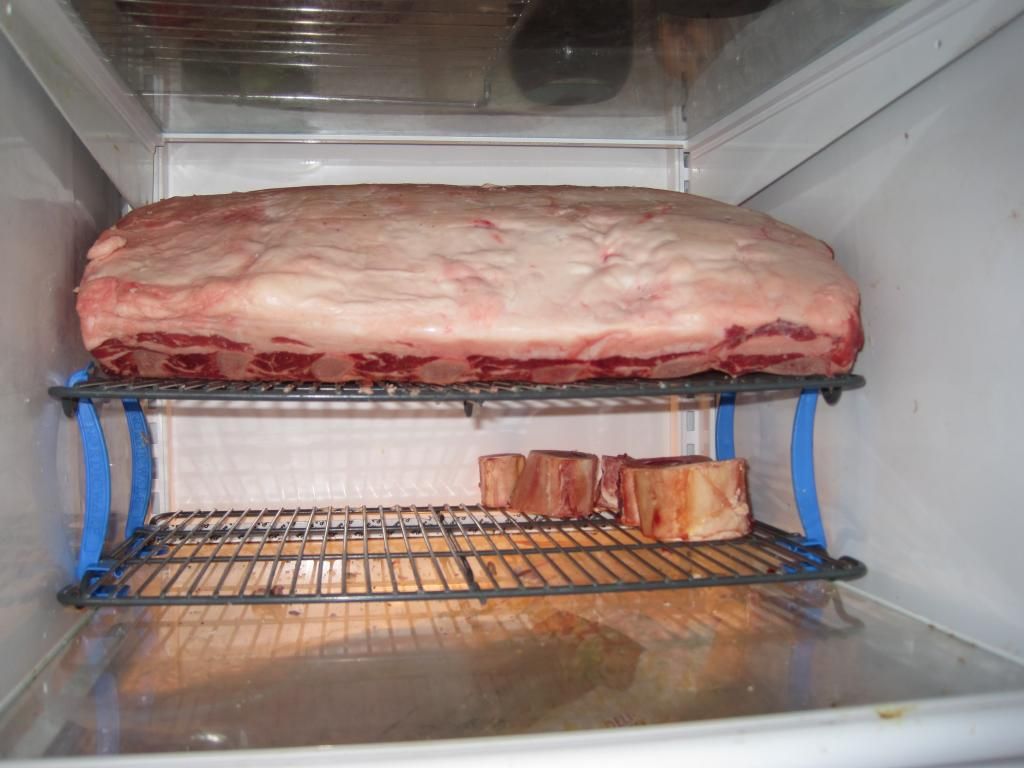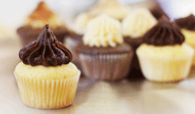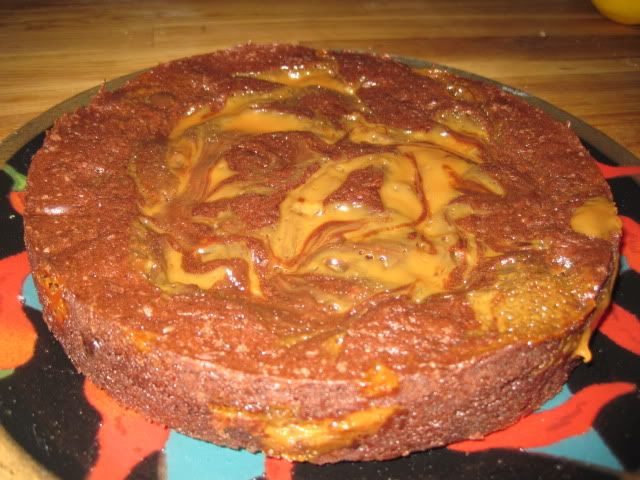This past Thanksgiving weekend, I was subjected to an unexpected visit from parents who live in another country, and whom I hadn't seen in four years.
The merits or liabilities of such an event aside, part of the visit involved, of course, feasting in a grand manner.
On their last evening in NYC, my parents took my brother and his wife and daughter, Husband, and me to The Post House for a farewell dinner. This is one of New York City's most renowned steakhouses, and, as far as my father is concerned, a dining Mecca. They specialize in dry aged steaks, and they charge a serious price for them.
"Dry aged beef." What a buzzword. We see it bandied about everywhere, from medium to top-priced restaurants, often worn as a badge of honor.
But do we really known what dry aging really means?
These steakhouses would have us believe that dry aging is some arcane secret, only available to those who have received extensive training, have complicated equipment, and therefore are allowed to charge mere mortals outrageous prices for the privilege of feasting on the product of their sorcery. They want you to believe that if you were to try doing it at home, it would kill you.
If that were the case, Husband and I would have been dead a year ago.
The reality is that dry aging is easy. You need meat, a rack, and a fridge. And patience.
Dry aging is the art of turning an ordinary piece of meat into a sublime experience by putting it in the fridge and ignoring it for a minimum of three weeks. The meat will lose some moisture, which will concentrate and intensify the flavor. Also, the enzymes inside the meat will begin to break down the fibers, and tenderize the meat. The less polite definition is that dry aged meat is just meat that is in the early stages of decomposition, but it is controlled decomposition.
Here is what I do:
1. Make room in the refrigerator for a large rectangular rack. Mine is a double-tier 11" x 17" cookie cooling rack. It MUST be a rack, because you want the meat to have air around it all the time.
Here is what I do:
1. Make room in the refrigerator for a large rectangular rack. Mine is a double-tier 11" x 17" cookie cooling rack. It MUST be a rack, because you want the meat to have air around it all the time.
I can fit a slab of strip loin and a slab of ribeye on this rack and age them simultaneously.
2. Get a full slab of beef from your local meat provider. Costco carries some lovely varieties. I have aged ribeye, strip (top loin) and sirloin. It can be bone-in or boneless. If you want to make prime rib for Christmas, then bone-in is nicer. Prime grade is nice, but Choice grade turns out just as delicious after the aging process. You want the WHOLE piece in the cryovac plastic wrapper. It will be about 15 pounds. Bring it home.
3. Unwrap the meat in your sink, and dry it off completely with paper towels.
4. Place the meat on the rack in the refrigerator, bone-side down if bone-in. I do fat-side down if boneless. It drips less into the bottom of the fridge, or the meat that's in the bottom rack.
5. Here comes the hard part: Ignore the meat for a minimum of 3 weeks (the longest I've had a steak aging was 9-1/2 weeks, but that was the end of a slab that we started cutting into after four weeks). It will get ugly on the outside, really ugly: dark, dry, even a bit moldy. Do not fear. This is nature creating a wrapper of beef jerky to protect the tender steak inside.
6. When you are ready to eat the meat, slice off from the end however much you need. It can be a single steak, or it can be the whole slab for a big party. The inside of the meat will have turned a lovely deep burgundy.
Here you can see the contrast between the scary outside and the succulent inside:
7. Trim off the leathery outside from the meat.
The scraps look like this:
If you have a dog, feed him the scraps, and he will love you forever.
8. Now you are ready to cook the steaks. This takes some experimentation, until you get the hang of it. Dry aged meat has less water than fresh meat, so it will cook faster. You will need to play with the temperature of your oven or stove, or the setting on your grill. For a prime rib roast, I would say to sear the outside at 500º F for 15 minutes, and then roast slowly at 325º or 300º until it reaches an internal temperature of about 125. If you don't have a meat thermometer, get one. IKEA sells a lovely (if fragile) one for about seven bucks. Don't do the usual 135º F recommended for non dry aged meat. Your roast will dry out and you will be very upset.
Here is a trimmed 2-bone, bone-in ribeye roast. It can feed anywhere from 2-5 people, depending on appetite levels and how much other food you are serving.
Here is the roast, cooked:
Here is the roast, sliced:
Dinner is served:
Bon appétit!



















